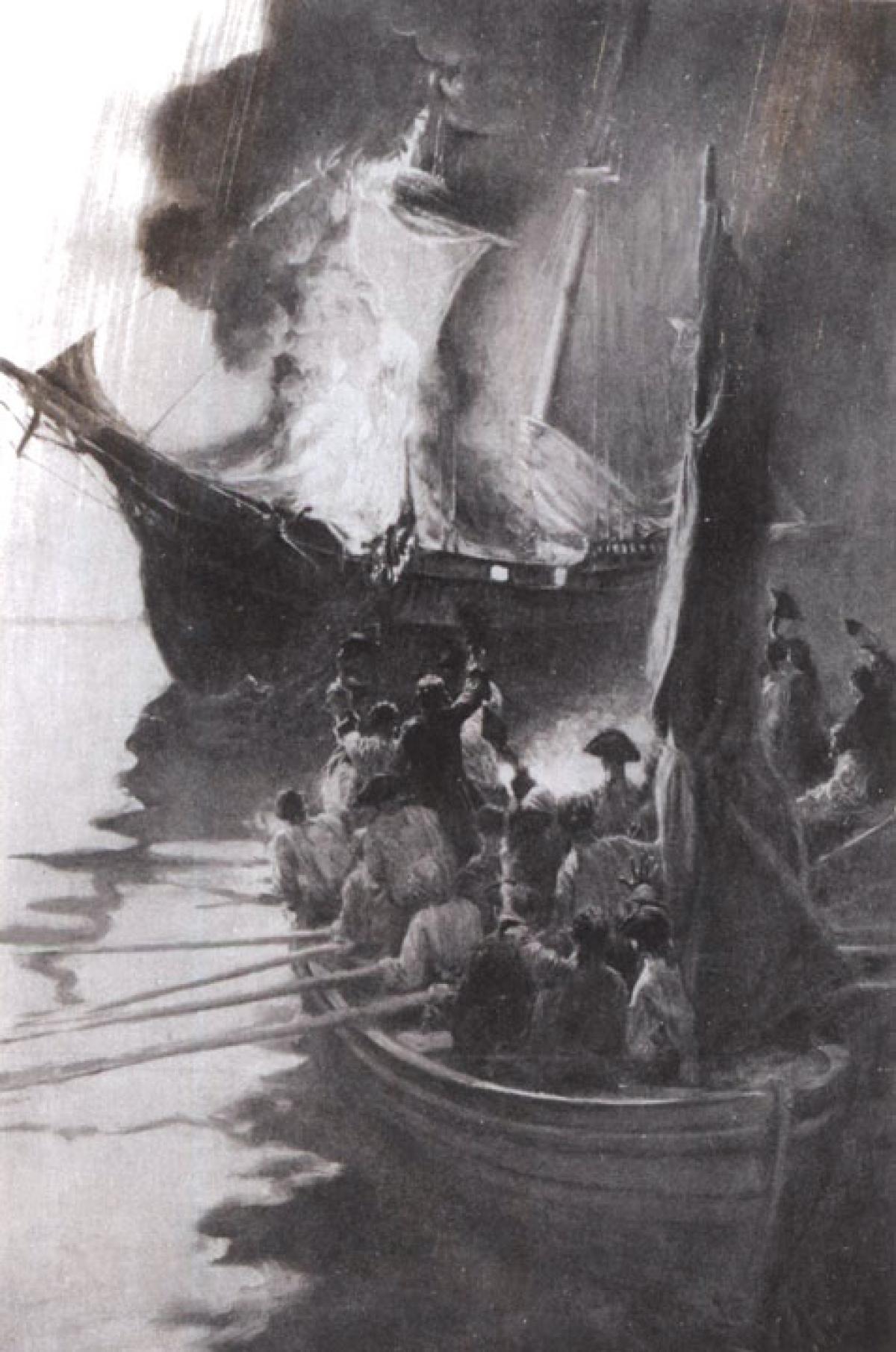In his two-masted schooner Gaspee, Royal Navy Lieutenant William Dudingston had enjoyed much success by capturing a large number of American vessels, from small fishing craft to large merchant traders. But his luck was about to change one June day on Narragansett Bay when he encountered the Hannah, a Rhode Island trader bound for Providence from Newport.
When Dudingston ordered the Hannah to stop, the American captain ignored his British counterpart and held his course. Dudingston fired several warning shots, but these too went unheeded, and the Hannah sailed swiftly on, carried by a freshening spring breeze as the infuriated Dudingston gave chase.
The Hannah’s captain, Benjamin Lindsey, was an able mariner who knew the Rhode Island waters well. Aware that the tide was low and that the Hannah drew little water, Lindsey veered off and headed into the shallows off Namquid Point. Dudingston’s ire trumping his wisdom, he recklessly continued the pursuit, and before long he paid the toll. The Gaspee ran firmly aground. Now both embarrassed as well as infuriated, Dudingston watched the Hannah turn about and resume her voyage up the bay.
When Lindsey arrived in Providence, he told the story to John Brown, a wealthy merchant who enjoyed much social and political sway in the city. Brown called for a meeting of the Sons of Liberty, a group whose charter did not include friendly welcoming committees for British ships. Shortly before midnight an “armada” of eight longboats shoved off from Fenner’s Wharf and, with sea captain Abraham Whipple providing his nautical expertise, headed for the Gaspee. The boats were loaded with 60 well-armed and determined men, including Brown and many other prominent Providence citizens. Many had darkened their faces with smudges of lampblack for camouflage. This attempt at concealment was aided by a moonless night, an important factor because the British man-of-war was armed with cannon that could easily blow the approaching longboats out of the water if they were detected. With the cloak of darkness making them virtually invisible, the Rhode Islanders were able to row in close enough to get beneath the maximum depression angle of those deck guns; any shots fired now would pass—perhaps disconcertingly, but harmlessly—over their heads.
By the time the Gaspee’s deck watch had detected the Americans, the schooner was surrounded, and Brown called for the British ship to surrender. Although one might question Dudingston’s navigational skills, the British captain did not lack for courage or belligerency. Summoning his best command voice to carry over the water, he ordered his crew to fire on anyone who attempted to board. Responding to that “invitation,” the Americans took to their oars and quickly closed on the Gaspee, swarming in from all sides at once. As they cleared the rails, small-arms fire erupted, and Dudingston fell to the deck, wounded by a musket ball. The British sailors were quickly subdued and were first bound, then lowered into the boats and rowed ashore. Brown and Whipple then ordered the ship burned, and soon the night sky was illumined by a bright and flickering beacon as the Americans rowed away into the night, returning to their homes in Providence.
With no further description, this account serves as an excellent example of the underdog Americans standing up to the powerful British Navy in the midst of the Revolutionary War. But this event took place in 1772, more than four years before the signing of the Declaration of Independence, and more than a year before the famous Boston Tea Party. Little wonder that a plaque in downtown Providence proclaims this event as the “first blood in the American Revolution.”



